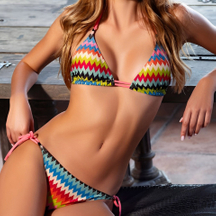Content Menu
● Introduction
● Understanding UPF Ratings
>> What is the Best UPF Rating?
● Importance of UPF Swimwear
● Choosing UPF Swimwear
>> Additional Features to Consider
● The Science Behind UPF Swimwear
>> Tight Weave or Knit
>> Fabric Composition
● Benefits of UPF Swimwear
● Choosing the Right UPF Swimwear
>> Fabric Choices
>> Fit and Coverage
>> Color Matters
● Expert Recommendations
>> Popular Brands Offering High-UPF Swimwear
● Care and Maintenance of UPF Swimwear
● Conclusion
● Related Questions
>> 1. What does UPF mean?
>> 2. Is UPF 50+ swimwear safe for children?
>> 3. Do I need to wear sunscreen with UPF clothing?
>> 4. How often should I replace my UPF swimwear?
>> 5. Can I use regular swimwear for sun protection?
● Citations:
Introduction
In today's world, where skin cancer rates are on the rise, understanding sun protection has never been more critical. The demand for sun-protective clothing, particularly swimwear, has surged as people become increasingly aware of the harmful effects of ultraviolet (UV) radiation. This article delves into the concept of UPF (Ultraviolet Protection Factor) ratings, their significance, and why a UPF rating of 50+ is considered the best for sun-protective swimwear.
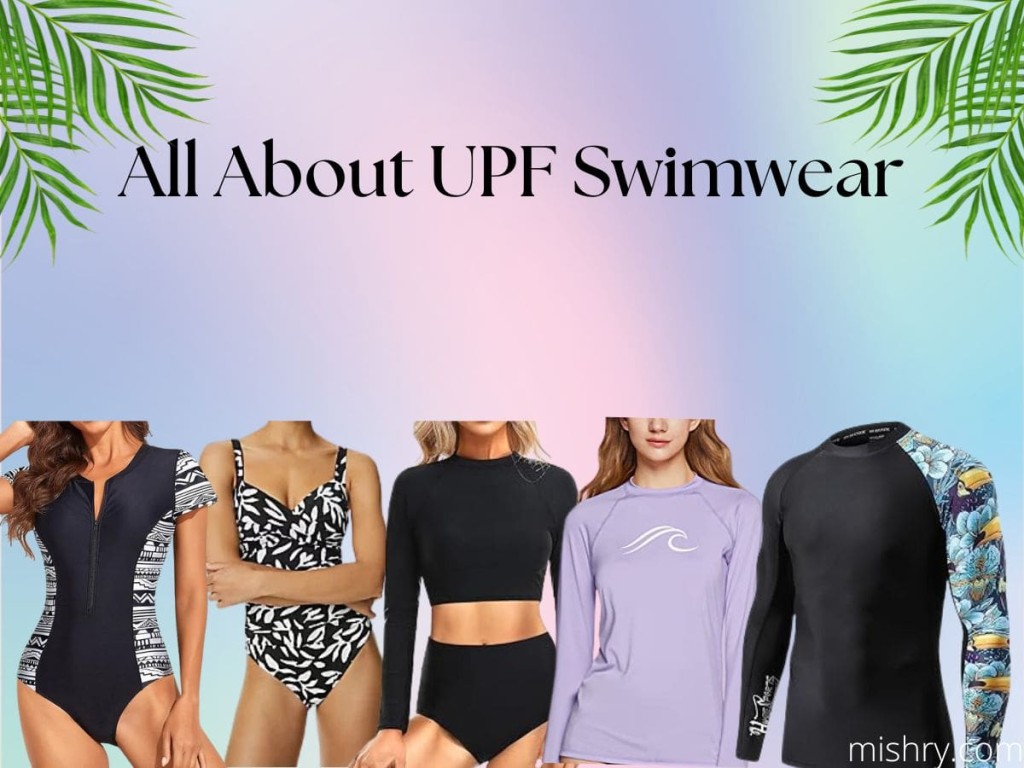
Understanding UPF Ratings
UPF ratings are essential for anyone looking to protect their skin from harmful UV rays while enjoying outdoor activities. Unlike SPF (Sun Protection Factor), which measures the effectiveness of sunscreen against UVB rays, UPF indicates how much UV radiation a fabric allows to reach the skin.
- UPF 15-24: Good protection (93.3% - 95.8% of UV rays blocked)
- UPF 25-39: Very good protection (96.0% - 97.4% of UV rays blocked)
- UPF 40-50+: Excellent protection (97.5% - 98%+ of UV rays blocked)
The Skin Cancer Foundation recommends wearing clothing with a UPF of at least 30 for effective sun protection, but a UPF of 50+ is optimal.
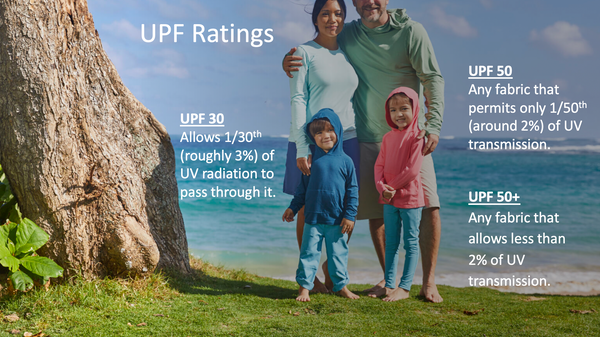
What is the Best UPF Rating?
The best UPF rating for sun-protective swimwear is UPF 50+. This rating means that only 1/50th of the sun's UV rays can penetrate the fabric, offering maximum protection against sun damage. Swimwear with this rating blocks approximately 98% of harmful UV radiation, making it an excellent choice for anyone spending time outdoors.
Importance of UPF Swimwear
Wearing UPF-rated swimwear is crucial for several reasons:
- Skin Health: Reduces the risk of sunburn and long-term skin damage.
- Skin Cancer Prevention: Regular exposure to UV radiation can lead to skin cancer; protective clothing helps mitigate this risk.
- Comfort: Many UPF fabrics are designed to be lightweight and breathable, making them comfortable to wear in hot weather.
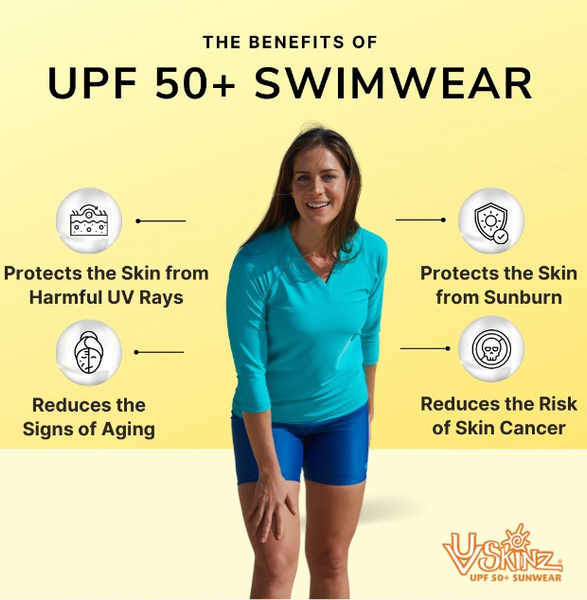
Choosing UPF Swimwear
When selecting sun-protective swimwear, consider the following factors:
- Look for a UPF Rating of 50+: This ensures maximum protection from UV rays.
- Fabric Content: Synthetic materials like polyester and nylon typically provide better protection than cotton due to their tightly woven fibers.
- Fit and Coverage: Opt for swimwear that covers as much skin as possible. Long-sleeve rash guards and full-coverage swimsuits offer better protection.
Additional Features to Consider
- Moisture-Wicking Properties: Fabrics that wick moisture away from the skin can help keep you cool and comfortable.
- Quick-Drying Materials: Look for swimwear that dries quickly to maintain its protective qualities even when wet.
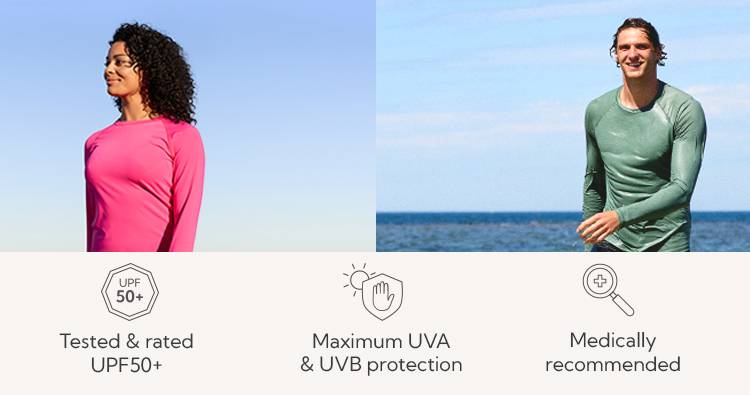
The Science Behind UPF Swimwear
Understanding how UPF swimwear works is essential for making informed choices about sun protection. The effectiveness of UPF-rated fabrics comes from two primary factors:
Tight Weave or Knit
The structure of the fabric plays a crucial role in its ability to block UV rays. Tightly woven or knitted materials minimize the space between fibers, preventing UV radiation from penetrating through the cloth.
Fabric Composition
Certain chemicals can be added during manufacturing to enhance a fabric's ability to absorb or reflect UV radiation. These treatments increase the overall effectiveness of the material's sun protection properties.
Benefits of UPF Swimwear
Swimwear with a UPF rating provides several advantages for people who spend time outside, particularly while participating in water sports:
| Benefit | Description |
| Skin Protection | Blocks harmful UV rays, reducing sunburn, premature aging, and skin cancer risk. |
| Continuous Protection | Unlike sunscreen, no need for reapplication while swimming. |
| Comfort | Lightweight, stretchy, and breathable for aquatic activities. |
| Versatility | Available in various styles, patterns, and sizes to suit preferences. |
| Durability | High-quality materials resist fading, stretching, and breakdown. |
| Environmental Benefits | Reduces reliance on sunscreen chemicals that can harm marine life |
Choosing the Right UPF Swimwear
When selecting your swimwear, consider these key aspects:
Fabric Choices
1. Polyester: Known for its durability and excellent UV-blocking capabilities.
2. Nylon: Offers similar benefits but is often lighter and dries faster.
3. Bamboo: Naturally odor-resistant and soft; it provides good UV protection.
4. Elastane: Provides stretch but should be blended with other fabrics for optimal protection.
Fit and Coverage
Choose swimwear that offers maximum coverage—look for long sleeves and high necklines if possible. Rash guards are an excellent option for additional arm coverage.
Color Matters
Darker colors tend to absorb more UV rays compared to lighter shades, providing better overall protection.
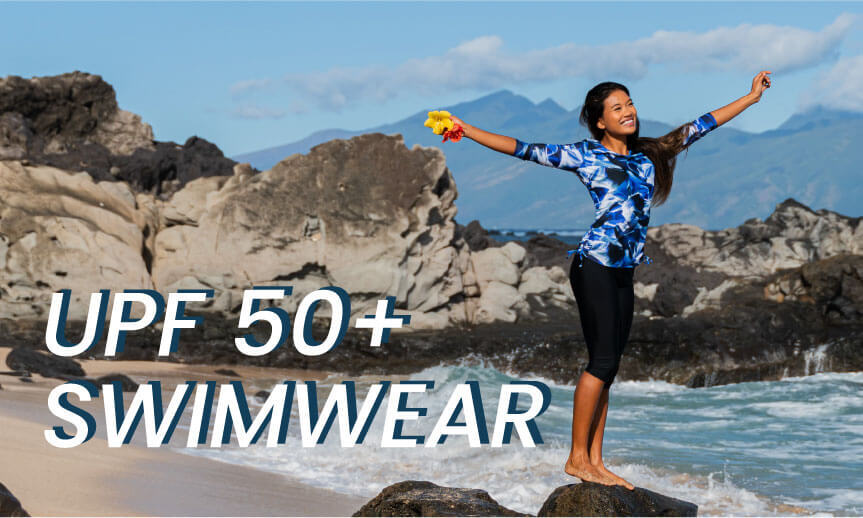
Expert Recommendations
Experts recommend looking for swimwear that has received The Skin Cancer Foundation's Seal of Recommendation. This seal indicates that the fabric has undergone rigorous testing and meets specific standards for blocking UV rays effectively.
Popular Brands Offering High-UPF Swimwear
1. UV Skinz: Known for its extensive range of family-friendly options with high UPF ratings.
2. Coolibar: Offers stylish designs with rigorous testing standards.
3. Cabana Life: Focuses on fashionable options without compromising on sun protection.
4. Jantzen: Combines style with effective sun-blocking technology.
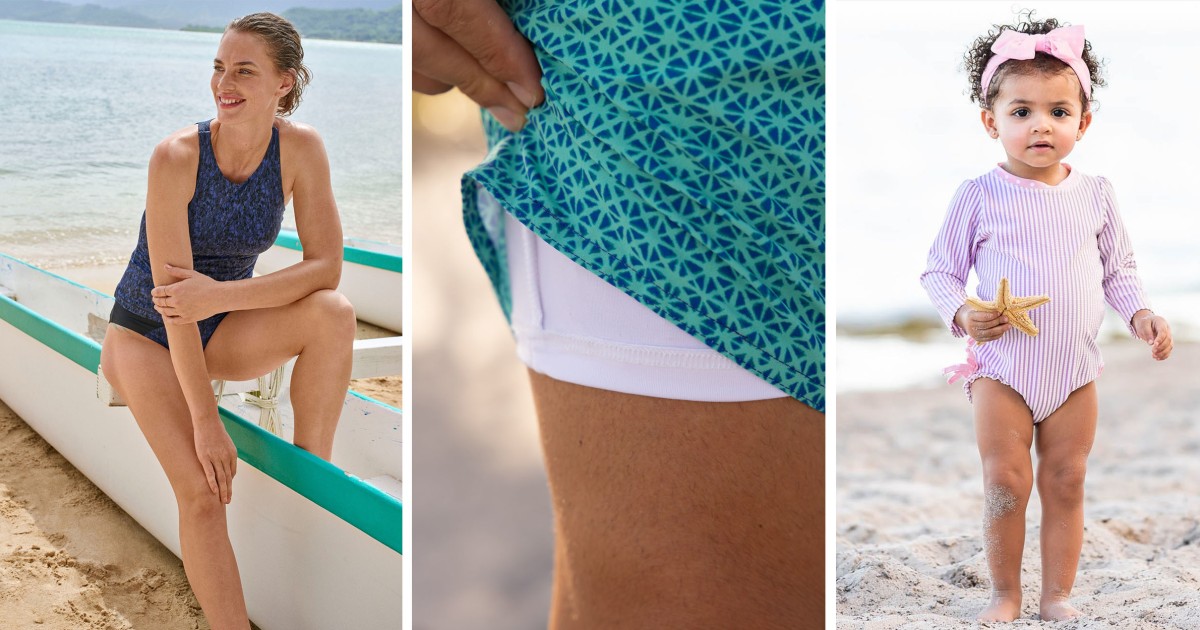
Care and Maintenance of UPF Swimwear
To ensure your UPF swimwear maintains its protective qualities:
- Follow Washing Instructions: Always adhere to care labels; avoid bleach and fabric softeners.
- Avoid Excessive Heat: Do not tumble dry on high heat; air drying is preferable.
- Inspect Regularly: Check for signs of wear or damage that could compromise UV protection.
Conclusion
Investing in high-quality UPF 50+ swimwear is vital for anyone who enjoys outdoor water activities. With various options available on the market, protecting your skin from harmful UV rays has never been easier. Always remember that while UPF clothing offers significant protection, it should be used in conjunction with other sun safety measures such as sunscreen application and seeking shade during peak sunlight hours.
Related Questions
1. What does UPF mean?
- UPF stands for Ultraviolet Protection Factor, which measures how effectively clothing blocks UV rays.
2. Is UPF 50+ swimwear safe for children?
- Yes, it provides excellent protection against harmful UV rays and is safe for children.
3. Do I need to wear sunscreen with UPF clothing?
- Yes, it's recommended to apply sunscreen on exposed areas not covered by clothing.
4. How often should I replace my UPF swimwear?
- It's advisable to replace it every couple of years or when it shows signs of wear.
5. Can I use regular swimwear for sun protection?
- Regular swimwear typically does not provide adequate UV protection; opt for UPF-rated options instead.
Citations:
[1] https://www.mishry.com/all-about-upf-swimwear
[2] https://raywardapparel.com/blogs/posts/ultimate-guide-uv-protection-fabric-for-outdoor-fun
[3] https://www.nbcnews.com/select/shopping/best-upf-clothing-ncna1239532
[4] https://www.uvskinz.com/blogs/live/everything-you-need-to-know-about-upf-swimwear
[5] https://jantzen.com/blogs/jantzen-news/the-science-of-sun-protection-understanding-upf-in-swimsuits
[6] https://www.cheekychickadeestore.com/pages/best-swimsuit-materials
[7] https://www.sunveil.com/sun-protection-resources/faq.aspx
[8] https://jantzen.com/collections/uv-protection-swimwear
[9] https://discoveryfabrics.com/blogs/threads-of-wisdom/how-to-choose-the-best-fabric-for-sun-protection
[10] https://sundazesurf.com/blogs/news/the-importance-of-sun-protective-swimwear
[11] https://www.uvskinz.com
[12] https://www.uvskinz.com/blogs/live/upf-clothing-what-upf-rating-is-best






















